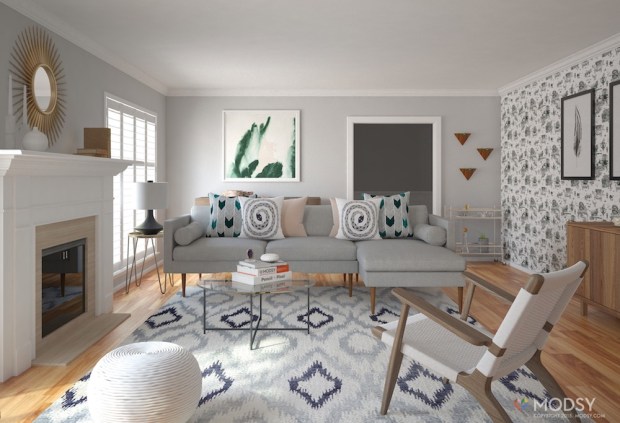Bringing ‘Try Before You Buy’ To Interior Design

It looked great in the store, but it didn’t look so great when it got home.
It’s a problem all consumers face, and it isn’t that big of a deal for most objects. Thinking better of a buy is an easily solved problem generally handled by finding a receipt and returning to the store to trade in a wrong purchase.
But, as easy as that is when the item in question is, say, a t-shirt, the mechanics of buyer’s remorse become a good deal more complex when the thing that didn’t quite work out is a couch, ottoman or other large pieces of furniture. Not impossible to be rid of, but not exactly easy, either.
3-D imaging and augmented reality (AR) start-up Modsy believes technology is the right place to start when solving the problem. That is particularly true since, for the first time ever, the market conditions are lined up properly, making it commercially feasible to develop better ways to virtually render human living spaces.
“Thanks to advancements in 3-D renderings, the days of guessing how furniture and decor will look inside a space [are] long gone,” said Shanna Tellerman, CEO of Modsy.
The company’s central conceit is that it allows customers to upload photos and dimensions of any room, then creates a 3-D model of the space complete with recommendations from an interior designer on how to fill it. That model is plotted using furniture and accessory items from a variety of home decor stores, and Modsy allows customers to buy the items (as a unit or a la carte) at a discount through its platform.
It appears it’s an idea that investors can get behind. As of last week, Modsy announced it had closed a $23 million Series B funding round led by Advance Venture Partners. Previous rounds have included participation from Norwest Venture Partners, NBC Universal Cable Entertainment and Comcast Ventures. The new infusion brings the company’s total fundraising to date to $33.75 million.
So, what’s next for a startup that finds itself emerging into a suddenly crowded digital field?
What Makes Modsy Different
The advancements in AR and virtual reality (VR) that Tellerman touts have notably been popping up all over the retail ecosystem for the better part of 18 months. In fact, digital retail has recently begun discovering AR/VR in a big way, and home and interior design have turned out be an important sub-vertical.
Hutch, another interior design firm exploring AR capabilities, raised $10 million over the summer and announced a massive partnership with real estate website Zillow. Wayfair has been rolling out AR/VR updates of all stripes for more than a year as it tries to make it easier to visualize a space before the customer commits. Even Ikea is getting in on the act with its ARKit home furnishing app Place.
That’s just a small snapshot, too, as many other players are also specializing in tech for the home furnishing space.
There are also social media platforms like Instagram and Pinterest that are based on visual media, both of which have confirmed they are digging deeper into the AR/VR arena as they look to broaden the retail appeal of their respective social media hubs.
“If we can present you all these possibilities, then Pinterest is, in effect, helping you to design your life,” said Tim Weingarten, Pinterest’s product manager, at a recent industry event.
While the advances may be exciting, a rich variety of brands are looking to help customers design their lives. That means Modsy is a new competitor in a field that is rapidly becoming more crowded.
But Modsy’s offering is a little different. The platform works to find its users’ “style genome” through a style questionnaire and by examining the uploaded photos, then make pitches based on it. The process is also highly automated, and the company has managed to decrease human interaction with the room design process by about 90 percent. The user snaps and uploads the photos, and the software takes over from there.
Customers can see the Modsy-designed room from all angles, including as if they were standing in it or from a bird’s-eye view. With the 3-D Modsy Style Editor — which is currently in beta but expected to hit the market in wide release soon — customers can swap out items based on what they’ve already purchased and update the overall look before progressing.
Modsy also gives users a few different levels on which to interact with the brand. Having the 3-D models made is not free ($69), though it is somewhat cheaper than it once was. Users can also upgrade to a professional package that comes with a certified style advisor tasked with fully guiding them through the process ($199).
What’s Next
With $23 million in new funding now rolling in, Tellerman says coming up with partnerships will be the name of the game. The brand already works with more than 100 retail partners like Target, West Elm, Wayfair and more.
